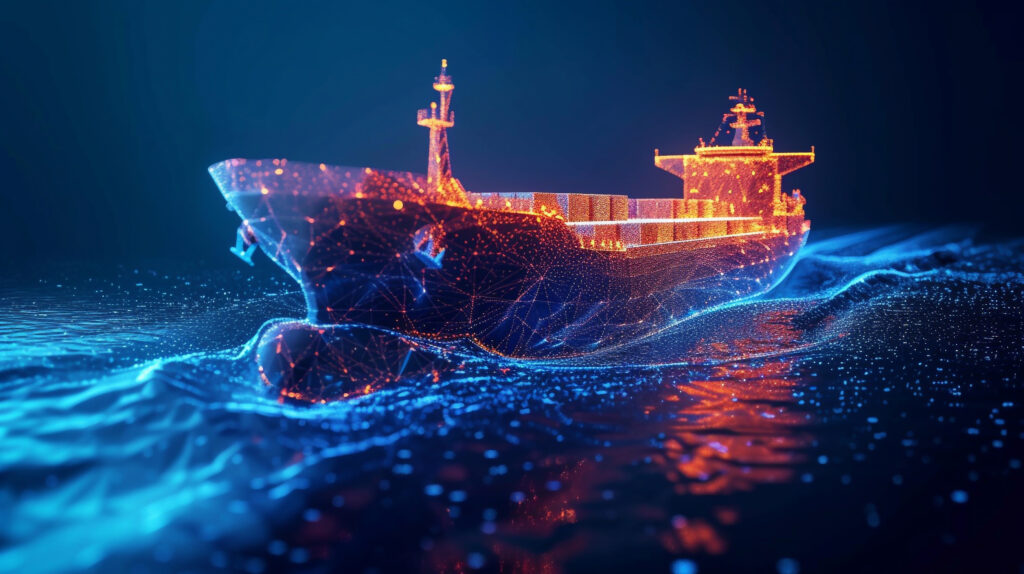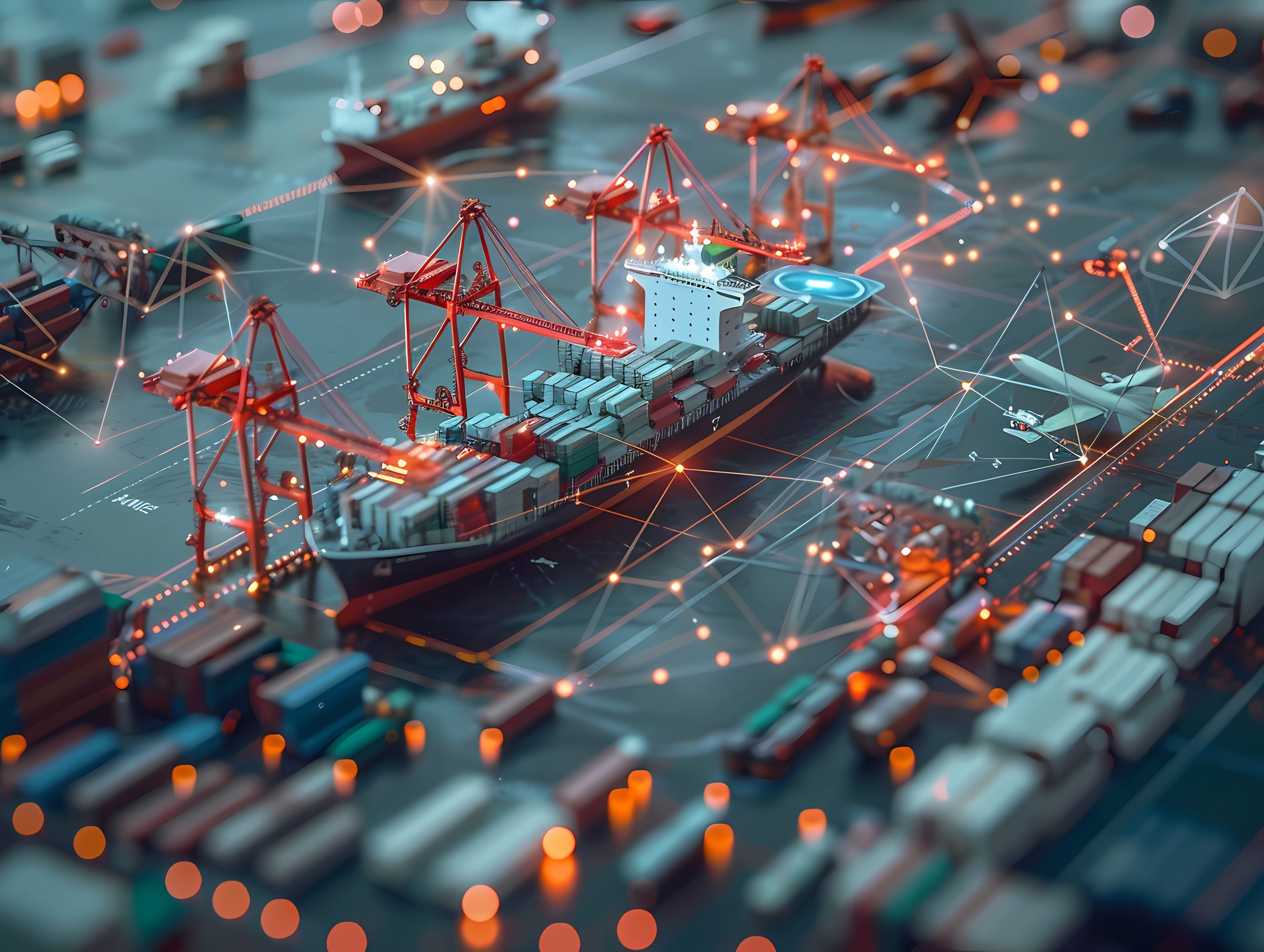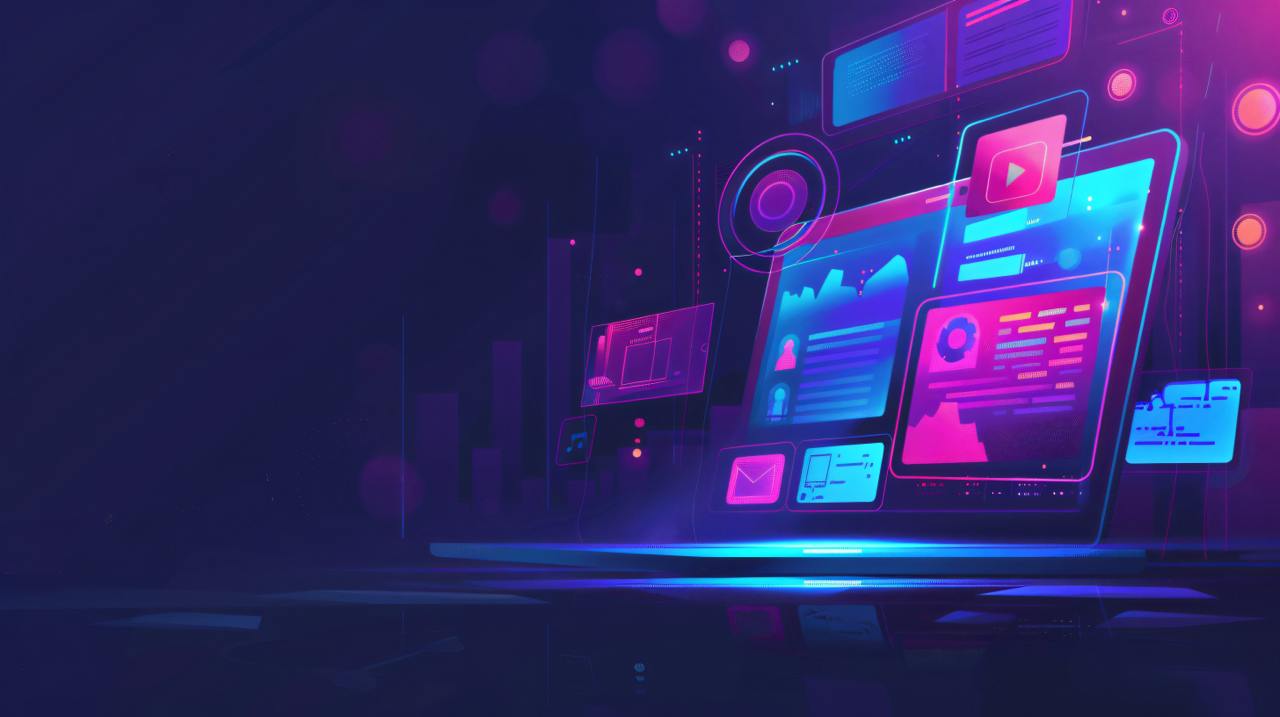Logistics runs on paperwork. Bills of lading, invoices, customs forms—it’s a slow, error-prone system. For years, people argued blockchain could fix this by creating a single, trusted digital record all parties could use.
Maersk and IBM tried to make this real with TradeLens. The platform worked. It could track a container seamlessly from port to port.
But it failed for a simple reason: not enough companies used it. Why would Maersk’s competitors share their sensitive shipping data on a platform their biggest rival helped operate? They wouldn’t. Without near-total industry buy-in, the system couldn’t function.
TradeLens was closed in 2022. It proved that the hardest problems in logistics aren’t technological—they are about competition and trust.
Overview of the Maersk and IBM Partnership
TradeLens, the solution created by Maersk and IBM, was designed to be a neutral digital foundation for the entire industry. The vision was that everyone—from the freight loader in Singapore to the truck driver in Rotterdam to the customs agent in Los Angeles—would work from the same, unchangeable record of a shipment’s journey.
The technology worked. Major ports and carriers signed on. But the business case didn’t. The platform needed everyone to use it, and too many companies saw Maersk not as a neutral partner, but as a competitor. Why would they give their data to a rival?
In the end, that lack of trust is what shut TradeLens down. The project proved a crucial point: in global logistics, building a coalition is often harder than building the technology.

What is TradeLens?
TradeLens had one job: to kill the paper trail. Maersk and IBM built it to tackle the industry’s chaos—the lost forms, the constant delays, the endless emails. The goal was to get everyone, from the biggest port to the smallest customs agent, onto one single platform where all the shipping data was shared instantly and couldn’t be changed.
This was the power of the blockchain. Whenever something was recorded, for example, a container was sealed or a ship departed—it was final. The record was unchangeable. The data was available to everyone and could not be altered.
It was supposed to help to get rid of doubts and delays caused by the human factor and paperwork. At first it looked like the answer to this ever-existing problem was found.
How It All Started
In 2017, Maersk and IBM launched an experiment. They wanted to see if blockchain could finally bring order to the chaotic, paper-based world of global shipping.
They weren’t alone in their frustration. The entire industry was stuck using slow, outdated systems. Tracking a shipment often required a string of phone calls and sifting through piles of documents. Delays were normal, errors were common, and everyone knew there had to be a better way. TradeLens was an ambitious effort to build it.
By 2018, they had an answer: TradeLens. At first, it made waves. Major ports and rival shipping companies came on board, all drawn to the same powerful idea: a single source of truth that updated for everyone simultaneously. For a short while, it genuinely seemed like this old-school industry was about to be turned upside down.
That optimism, however, would be short-lived. The same fundamental issues that would later doom the project were already taking root, unnoticed during the initial hype.
What Were the Key Project Goals?
Maersk and IBM launched TradeLens to tackle a few core problems that everyone in shipping hated:
- No Single Source of Truth. The main goal was to create one shared, unchangeable record for every shipment. Instead of ten different companies using ten different systems (and spreadsheets), everyone would see the exact same real-time information. This was meant to kill arguments and errors on the spot.
- Eliminate Paper Delays. The platform aimed to replace a slow, paper-based system where documents get lost and stuck in customs. By digitizing everything, they hoped to speed up processes and cut the costs that come with waiting.
- Lock Down the Data. Once a detail was logged—like a container’s weight or its location—it became permanent. This wasn’t just about security; it was about making the data trustworthy so companies could stop double-checking everything.
- Get Everyone on the Same Page. Perhaps the biggest goal was to act as a neutral platform that connected the entire industry, from the largest carrier to the smallest freight forwarder. The hope was that a common tool would force a new level of cooperation.
In the end, TradeLens proved that you can build a solution for technical problems—like paperwork and data security—but you can’t always engineer away business rivalries and a lack of trust. The goals were right; the industry wasn’t ready.
How Did TradeLens Function?
Shipping is messy. Everyone uses different systems, stuff gets lost, and no one really knows where anything is. TradeLens was supposed to fix that.
It was basically a shared notebook that everyone in the supply chain could use.
- One version of the truth. When a container was loaded onto a ship, someone would note it in TradeLens. That note was permanent. Everyone else—the port, the trucking company, the customer—could see that note and trust it was real. No more arguing.
- No more secrets. If your shipment was stuck in customs, you knew immediately. The system updated for everyone at once. The goal was to replace phone calls and frantic emails with a single, calm look at a screen.
- It did the paperwork itself. For example, when a ship arrived, the system could automatically send the documents to customs. It just saved time and avoided mistakes.
- It was built on trust. The technology made sure no one could cheat or change the records. So, even competing companies could use the same notebook without worrying.
The big lesson? Building the notebook was easy. Getting all the competitors to agree to use the same one was impossible. The tool worked. The people didn’t.
What Did TradeLens Consist Of?
Let’s be honest, most people don’t care what something is built on; they care what it does. So, what did TradeLens do?
It tried to be the one place everyone in a shipment’s journey could go to see what was happening, in real time, without anyone being able to mess with the records. Think of it like a shared, permanent group chat for your container where every message is a verified fact.
The main parts were:
- The Unchangeable Logbook. This was the core. Every time something happened—a container got scanned at a port, customs paperwork was filed—it was stamped into the digital record. Once entered, it was locked in. This was meant to stop the endless back-and-forth of “we never received the document” or “that’s not the time we recorded.”
- Automated Rules (The “If-This-Then-That”). The system used smart contracts to handle boring jobs automatically. For instance, if all the required documents were uploaded and approved, then the system could automatically tell the ship it was clear to leave. This cut out days of waiting for someone to manually send an email.
- Plug-and-Play Connectivity. They knew companies wouldn’t throw out their own systems. So, TradeLens was built to connect to them. Through secure digital pipelines (APIs), a company’s existing software could talk to TradeLens, pulling in tracking info or sending updates without anyone having to re-enter data.
- A Dashboard for Everyone. The interface had to be simple. A truck driver shouldn’t need a degree in blockchain to see where to pick up a container. So, they built a clean, visual dashboard that showed the status of a shipment at a glance, hiding all the complex tech under the hood.
In short, TradeLens was less of a “product” and more of a protocol. It was an attempt to get the whole industry to agree on one set of facts and one way of sharing them. The technology provided the trust; the platform provided the utility. The hope was that efficiency would do the rest.

What Went Wrong?
For all its promise, TradeLens ultimately couldn’t overcome the very human and business realities of the shipping industry. Its story is a classic case of a technical solution running headfirst into non-technical problems.
The core issue was a vicious cycle: the platform’s value depended on nearly everyone using it, but getting everyone to use it was impossible without first proving its value.
Here’s a breakdown of what stalled the revolution:
- The Chicken-and-Egg Problem. TradeLens became useful only when a critical mass of companies joined. But why would a competing shipping line hand over its valuable operational data to a platform co-owned by its biggest rival, Maersk? Most companies saw this not as collaboration, but as ceding competitive advantage. Without universal buy-in, the data on the platform was incomplete, making it less valuable for those who did join.
- The Integration Headache. Companies already had their own systems—old, complex, and expensive to replace. Plugging into TradeLens wasn’t a simple switch; it was a costly and disruptive IT project. For many, the ROI wasn’t clear. The benefits of “potential efficiency” were too fuzzy to justify the very real and immediate expense and hassle.
- Data Privacy Fears. While blockchain’s transparency was a selling point, it was also a major fear. Companies were afraid of showing sensitive information concerning shipping rates, routes, and client details on a shared ledger, even with permissions. The idea of immutable data also made some uneasy because a simple human error couldn’t be easily erased, only amended with another permanent record.
- A Solution in Search of a Unified Problem. The shipping industry is fragmented, with each player having different pain points. A port’s main concern is turnover speed, a customs agent’s compliance, and a shipper’s cost. TradeLens had to be all things to all people, and in doing so, it struggled to demonstrate crystal-clear, undeniable value to each specific user. It solved many problems in theory, but no single problem so well that it became indispensable.
In the end, TradeLens didn’t fail because the technology was flawed. It failed because it underestimated the power of industry inertia, competitive distrust, and the simple question every company asked: “What’s in it for me, right now?” The platform needed to change a culture before it could change a process, and that proved too tall an order.
The Lessons TradeLens Taught Us
TradeLens proved that the biggest barriers to innovation often aren’t technical—they’re human. Here’s what its failure taught us:
- A Tool is Only Useful if People Actually Use It. This was TradeLens’ core Catch-22. The platform became valuable only if everyone used it, but no one wanted to be the first to commit without seeing value first. It taught us that without a strategy to build critical mass from day one, even the most elegant system will sit empty.
- Don’t Boil the Ocean. Solve One Real Problem. TradeLens tried to fix the entire supply chain at once. In doing so, it didn’t solve any single pain point desperately enough to become essential. The lesson? Start small. Find one specific, expensive headache—like customs clearance—and solve it flawlessly. Prove your worth there first.
- If a Competitor Builds It, You Probably Won’t Come. Maersk’s involvement was a fatal flaw. Why would other shipping lines hand over their valuable operational data to a platform partly owned by their biggest rival? The takeaway is simple: for an industry-wide platform to succeed, it must be genuinely neutral and feel safe for all players, especially competitors.
- Transparency is Scary for Businesses. While immutable data sounds great for trust, companies were nervous. A simple mistake or a negotiated rate could be permanently visible. The lesson learned is that successful platforms need flexible privacy—the ability to show what needs to be shown to whom, not total exposure.
- If the Savings Aren’t Immediate, the Interest Won’t Be Either. For many companies, the costs of integrating with TradeLens were high and it was a little bit complicated compared to the benefits of “future efficiency”. This taught us that the value proposition must be concrete, immediate, and financial. It has to answer the question “What’s in it for me this quarter?” clearly.
In the end, TradeLens showed that you can have the best technology in the world, but if you misunderstand the politics, fears, and economic incentives of an industry, you’ll fail. The next big idea needs to be as savvy in sociology as it is in code.
Could the Closure Have Been Avoided?
It’s easy to look back and see what went wrong, but harder to say if it could have been saved. Some things were probably always going to be a problem. But if we were to do it over, a few key changes might have helped.
First, they needed to start with a smaller win. Instead of trying to connect the entire global supply chain on day one, they should have focused on solving one high-pain, uncontroversial problem first—like automating port arrival paperwork. A small, undeniable success would have been more powerful than a grand, unproven vision.
Second, the platform needed to feel neutral. Maersk’s central role made competitors understandably nervous. Creating an independent entity—a consortium or a nonprofit—to govern the platform from the start might have made it feel less like handing your data to a rival.
Finally, the value had to be immediate and financial. Companies don’t care about “transparency” for its own sake; they care about saving money now. The pitch shouldn’t have been about blockchain. It should have been: “Use our system and you’ll cut your customs clearance time in half, starting next month.”
Would that have been enough? It’s impossible to know. The forces of inertia and distrust in global shipping are powerful. But it would have given TradeLens a real fighting chance. Its ultimate lesson is that a revolutionary tool needs an evolutionary strategy. You have to give people a reason to change today, not just a promise for a better tomorrow.
Conclusion
TradeLens was a pioneer project. It proved that the technology to revolutionize global shipping isn’t just possible—it’s already here. The platform worked.
But its failure proved something even more important: that the hardest parts of innovation have nothing to do with code. The real barriers are human: trust, competition, and the immense difficulty of getting an entire ecosystem to change at once.
The project’s legacy isn’t working right now. It showed that to transform an old industry, you need more than a better tool. You need a strategy that understands politics, economics, and psychology.
The next project that tries to fix supply chains won’t start from scratch. It will start from the hard-won wisdom TradeLens left behind.




